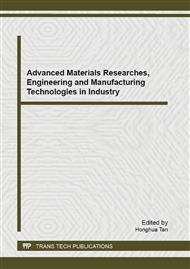p.611
p.618
p.622
p.626
p.632
p.638
p.644
p.651
p.655
Analysis of Rail Traffic Measured Vibration Based on Hilbert-Huang Transform
Abstract:
The effective measures to solve the urban traffic problem is the development of urban rail transit, but its ambient noise and vibration problems have prompted a strong reaction, restricting the development of rail transport undertakings. Observations on Beijing rail traffic of the 13th line Huoying-Huilongguan segment of vibration signals analysis, and we can get the Empirical Mode Decomposition (EMD) of the measured vibration signals through the HHT method, we also can analysis of the Hilbert-Huang time-frequency spectrum, the marginal energy spectrum and the instantaneous energy spectrum. Study the propagation of vibration along the ground, in order to predict the vibration level along the track. Though the analysis we find that the vertical vibration level is much higher than the level of vibration, the analysis should be mainly based on vertical vibration, the environmental vibration level is gradually attenuated with the increasing of the distance away from the track centerline.
Info:
Periodical:
Pages:
632-637
Citation:
Online since:
September 2013
Price:
Сopyright:
© 2013 Trans Tech Publications Ltd. All Rights Reserved
Share:
Citation:


